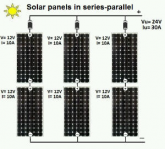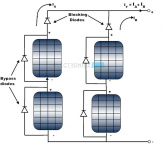I have a 12 volt system with 6 panels and 7 batteries. the batteries are 5, 100 Ah and 2, 55 Ah. I have a 40 amp MPPT controller. The issue I am having is that the batteries will not charge beyond about 11.8 volts. If I only connect a couple of them to the system they do seem to charge beyond 12 volts, though slowly. But with all of them connected, they won't charge past about 11.8 volts. All the batteries are relatively new and test out fine and the controller is also new and functioning properly and I have good solid cable connections between them.
Could I have not enough power from the panels to charge that many batteries or is there something else I should check? HELP!!
Could I have not enough power from the panels to charge that many batteries or is there something else I should check? HELP!!




